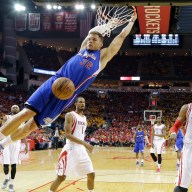These days, photography is accessible to most people.
But back when it was first invented, it was only for the middle or upper classes, and even then, the process was slow. It was time-consuming to polish the silver coating on daguerreotypes, and each photograph would take up to 20 minutes to capture.
“They were not the sort of things that everyone could afford,” said James Borcoman, curator of the National Gallery of Canada’s latest exhibit, 19th Century French Photographs from the National Gallery of Canada.
The moment the process was made available in 1839, manuals on how to do it were immediately published in 24 different languages around the world, Borcoman said.
“It caught on like wildfire,” he said.
“But it’s in Paris where you get all kinds of experimenting going on and all kinds of subject matter.
“The Paris school — most of what you see in the exhibition are photographers that lived in or around Paris — they were very inventive,” said Borcoman. “They did all kinds of things with this new invention that wasn’t being done elsewhere in the world.”
Opening Friday and on view through May 16, the exhibit features 117 works selected from the gallery’s permanent collection, which include daguerreotypes, salted paper, albumen silver, photogravure and gelatin silver prints by photographers including daguerreotype inventor Louis Jacques Mandé Daguerre, Maxime Du Camp, Charles Nègre, Gustave Le Gray, Eugène Cuvelier, and Eugène Atget.
Subjects include portraiture, landscape, nude studies, street activities, architecture, archaeology, and records of war.















